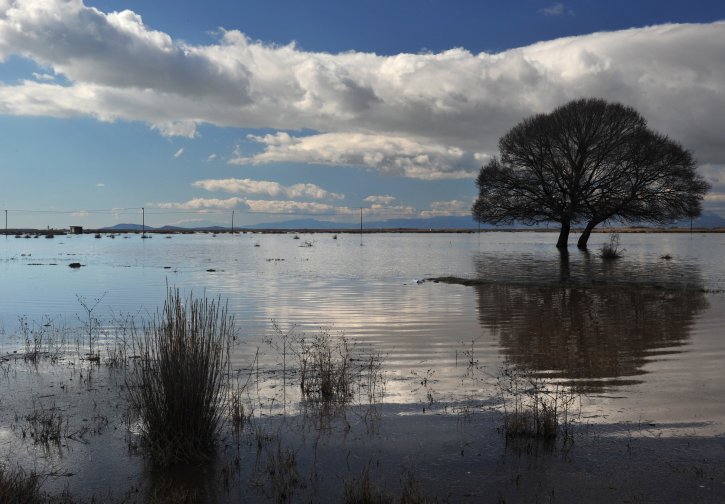VISTONIDA-SEA
Lake Vistonida (Greek: Λίμνη Βιστωνίδα, older form: Βιστωνίς) is a lake in Porto Lagos, Xanthi regional unit, Greece. It encompasses a unique ecosystem and the local climate can be described as mid-Mediterranean. It hosts a variety of fauna, which comprise several types of fish, amphibians, reptiles, mammals, birds as well as flora.
 |
 |
Lake Vistonida landscape (flooded) Saint Nicholas in Porto Lagos
It is the fourth largest lake in Greece with a total area of 45 square kilometres and a maximum length of 12.5 km and a maximum width of 7 km. The average depth is estimated at 4 m. The lake is connected to the sea, the Bay of Biston (or Porto Lagos), by narrow channels and the water is subject to fluctuations in salinity due to seawater entering the lake. The shallow waters are suitable for fish farming, with the movement of fish in and out of the lake used mainly for reproduction. Along the canals that connect the lake to the sea, the local population has developed a significant fish farming industry that dates back to historical origins.
History
In antiquity, the lake was called "Bistonis (Βιστονίς λίμνη), a great Thracian lake in the country of the Bistones, from whom it derived its name. The water of the lake was brackish and abounded in fish. The fourth part of its produce is said to have been granted by the emperor Arcadius to the convent of Vatopedi on Mount Athos. The river Cossinites emptied itself into the lake Bistonis, which at one time overflowed the neighbouring country and swept away several Thracian towns."
Ecology
The lake is surrounded by reed beds (Phragmites), tamarisk (Tamarix sp.), salt marshes, riparian forests, freshwater lakes and wetlands. 227 bird species have been counted in the lake, some of which are particularly rare, such as the head bird, the long-tailed and the nannochanna.
Following the ratification of the Ramsar Treaty (Law 191/1974), Greece included the Vistonida wetland in the country's Natura 2000 list of protected habitats and wetlands, together with the animal and plant species living there.
 |
 |
Flamingos in Lake Vistonida